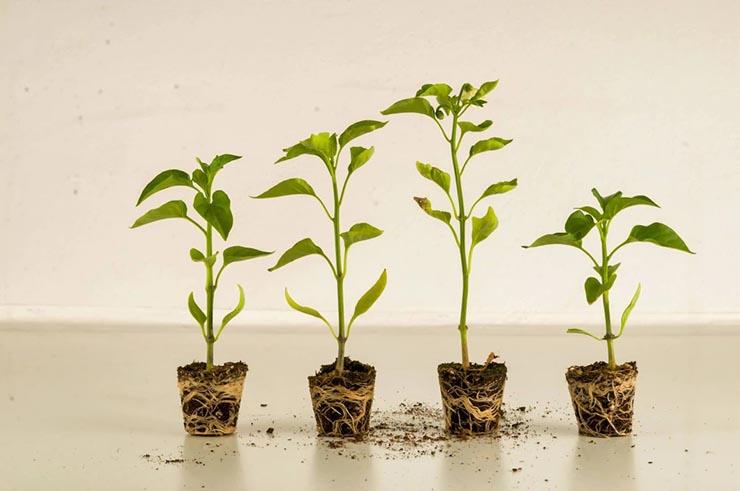
Applicable Regulations
- Regulation for the Protection of Plant Variety Rights – DS 35-2011-PCM
- Chief Resolution No. 0127-2021-INIA
- Decision 345 – Common Regime for the Protection of Plant Variety Rights
- 1991 UPOV Convention Act
Competent Authorities:
- Administrative Functions: Directorate of Inventions and New Technologies (DIN) of INDECOPI
- Execution of Technical Functions: Subdirectorate of Agricultural Innovation Regulation (SDRIA) of the Directorate of Agricultural Innovation Management (DGIA) of INIA
Minimum Requirements for Admission to Process:
- Name, address, and nationality of the applicant;
- Common and scientific name of the species;
- Indication of the proposed denomination;
- Name of the person who created or discovered and developed the variety;
- Noteworthy morphological, physiological, sanitary, phenological, physicochemical, and industrial or technological characteristics that allow for the description of the variety;
- Proof of payment of the established filing fee.
Process:
- Formal Examination: DIN-INDECOPI, with the technical opinion of SDRIA-INIA, will carry out the corresponding formal examination. If the application does not comply with attaching the information from the previous section, it will not be admitted and therefore will not be assigned a filing date. If the applicant fails to submit the additional documents[1], a period of 30 business days will be granted to complete the information.
- Publication: Upon completion of the Formal Examination, DIN-INDECOPI will issue an order for the publication of an excerpt of the variety in the Official Gazette “El Peruano”. The applicant must submit a copy of the publication to DIN-INDECOPI within a period of 3 months from the receipt of the order. Within 30 business days from the publication of the application, any interested third party with a legitimate interest may file an opposition questioning the conditions of novelty, distinctiveness, uniformity, and stability, as well as the denomination of the variety under process.
- Modality of Technical Examination: In order to determine the modality[2] of the technical examination to be carried out, SDRIA-INIA, through DIN-INDECOPI, will request the applicant to submit the technical examination report or patent document within a period of 3 months.
- Definition of Modality of Technical Examination: Once the modality is defined, DIN-INDECOPI will grant the applicant a period of 3 months to submit the application for the technical examination.
- Technical Examination: SDRIA-INIA proceeds with the examination of novelty, distinctiveness, uniformity, and stability according to the modality chosen by the applicant.
- Registrability Report: SDRIA-INIA issues a Registrability Report that is sent to DIN-INDECOPI regarding the technical examination of the submitted plant variety, indicating whether the proposed variety meets the requirements of distinctiveness, uniformity, and stability.
- Examination of Novelty and Appropriate Generic Denomination of the Breeder’s Certificate: DIN-INDECOPI issues a report establishing whether the application meets the requirements of novelty and appropriate generic denomination.
- Final Resolution: DIN-INDECOPI will issue the resolution in which it will pronounce on the granting of the breeder’s certificate application. DIN-INDECOPI must issue a decision within a period of three (3) years for annual species and five (5) years, exceptionally extendable to ten (10) years, for biennial and perennial species, counted from the date of filing of the protection application.
Validity and Maintenance of Rights
The duration of protection shall be twenty-five (25) years for vines, forest trees, fruit trees, including their rootstocks, and twenty (20) years for other species, counted from the date of grant.
Annuities shall be paid in advance, starting from the first anniversary of the granting of the Breeder’s Certificate. The due date for each annuity shall be the last day of the month of the anniversary of the date of grant of the Breeder’s Certificate.
(1)
- Method and Procedure for Obtaining the New Variety, as well as any information regarding any knowledge related to the variety that may facilitate the examination of compliance with the conditions established in Article 7 of Decision 345 (novelty, distinctness, uniformity, and stability), and that the variety is designated by an appropriate generic denomination.
- If it is a variety previously applied for abroad, the applicant shall provide information within their knowledge about: countries where protection has been sought; type of protection sought; corresponding application numbers; filing date; status of the application; name or reference of the breeder or inventor, if it is a patent application; and registration date.
- In the event that the proposed denomination by the applicant has been registered in their name as a product or service trademark for identical or similar products in a Member Country of the Andean Community, the resolution of trademark registration cancellation.
- DIN may request additional information, documents, or materials necessary for the examination of novelty, distinctness, uniformity, and stability, and for the variety to be designated by a denomination in accordance with the provisions of Article 7 of the Regulations for the Protection of the Rights of Breeders of Plant Varieties – DS 35-2011-PCM.
(2)
- Performance of the technical examination by SDRIA-INIA at its facilities,
- Performance of the technical examination by SDRIA-INIA in the breeder’s field,
- Validation of the technical examination conducted by the breeder in Peru, and
- Homologation of the technical examination conducted abroad.
